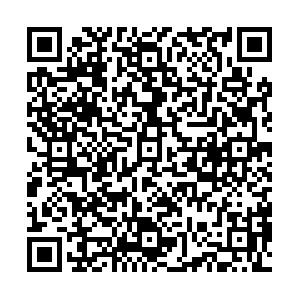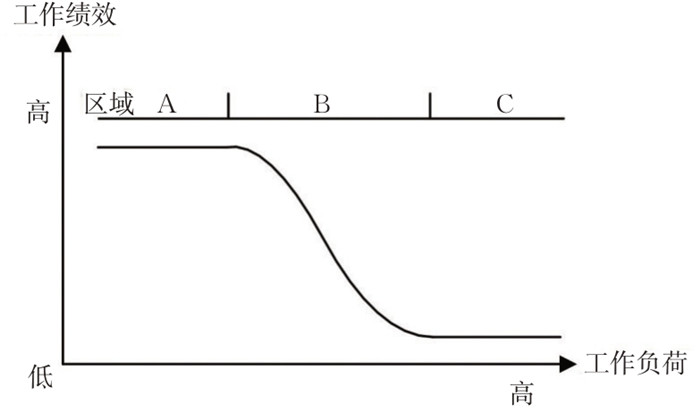| [1] |
范诗琪, 严新平, 张金奋, 等. 水上交通事故中人为因素研究综述[J]. 交通信息与安全, 2017, 35(2): 1-8. https://www.cnki.com.cn/Article/CJFDTOTAL-JTJS201702001.htmFAN Shiqi, YAN Xinping, ZHANG Jinfen, et al. A review on human factors in maritime accidents[J]. Journal of Transport Information and Safety, 2017, 35(2): 1-8. (in Chinese). https://www.cnki.com.cn/Article/CJFDTOTAL-JTJS201702001.htm
|
| [2] |
冯国红, 杨慧敏. 人因工程学[M]. 武汉: 武汉理工大学出版社, 2013.FENG Guohong, YANG Huimin. Human factors engineering[M]. Wuhan: Wuhan University of Technology Press, 2013. (in Chinese).
|
| [3] |
林崇德, 杨治良. 心理学大辞典上[M]. 上海: 上海外语教育出版社, 2003.LIN Chongde, YANG Zhiliang. The comprehensive dictionary of psychology[M]. Shanghai: Shanghai Foreign Language Education Press, 2003. (in Chinese).
|
| [4] |
BARSAN E, ARSENIE P, PANA I, et al. Analysis of workload and attention factors on human performances of the bridge team[J]. Journal of Maritime Studies, 2007, 21(1): 57-67. http://search.ebscohost.com/login.aspx?direct=true&db=aph&AN=27480516&site=ehost-live
|
| [5] |
GOULD K S, RØED B K, EVELYN-ROSE S, et al. Effects of navigation method on workload and performance in simulated high-speed ship navigation[J]. Applied Ergonomics, 2009, 40(1): 103-114. doi: 10.1016/j.apergo.2008.01.001
|
| [6] |
赵志葳, 朱云琪, 郑恩希, 等. 基于欧洲航运公司的船员疲劳影响因素分析[J]. 大连海事大学学报, 2017, 43(2): 39-44. doi: 10.3969/j.issn.1671-7031.2017.02.008ZHAO Zhiwei, ZHU Yunqi, ZHENG Enxi, et al. Analysis on the factors affecting seafarers fatigue based on European Navigation Inc[J]. Journal of Dalian Maritime University, 2017, 43(2): 39-44. (in Chinese). doi: 10.3969/j.issn.1671-7031.2017.02.008
|
| [7] |
贾宝柱, 谢灯峰, 林叶锦. 海员疲劳及其影响因素[J]. 中国航海, 2018, 41(4): 94-100. https://www.cnki.com.cn/Article/CJFDTOTAL-ZGHH201804019.htmJIA Baozhu, XIE Dengfeng, LIN Yejin. Seafarers'fatigue and its influential factors[J]. Navigation of China, 2018, 41(4): 94-100. (in Chinese). https://www.cnki.com.cn/Article/CJFDTOTAL-ZGHH201804019.htm
|
| [8] |
王黎静, 王晓丽, 何雪丽. 民航飞行员工作负荷影响因素体系研究[J]. 人类工效学, 2016, 22(3): 45-48+57. https://www.cnki.com.cn/Article/CJFDTOTAL-XIAO201603009.htmWANG Lijing, WANG Xiaoli, HE Xueli, The research of the influencing factors system of the civil aviation pilots workload[J]. Chinese Journal of Ergonomics, 2016, 22(3): 45-48+57. (in Chinese) https://www.cnki.com.cn/Article/CJFDTOTAL-XIAO201603009.htm
|
| [9] |
辛甜, 罗志燕, 蒋利添, 等. 飞机着陆阶段飞行员工作负荷分析[J]. 人类工效学, 2019, 25(2): 62-65. https://www.cnki.com.cn/Article/CJFDTOTAL-XIAO201902011.htmXIN Tian, LUO Zhiyan, JIANG Litian, et al. Analysis of pilot's workload in landing phase[J]. Chinese Journal of Ergonomics, 2019, 25(2): 62-65. (in Chinese). https://www.cnki.com.cn/Article/CJFDTOTAL-XIAO201902011.htm
|
| [10] |
YU Chungsan, WANG Minyang, LI Wenchin, et al. Pilots'visual scan patterns and situation awareness in flight operations[J]. Aviation Space and Environmental Medicine, 2014, 85(7): 708-714. doi: 10.3357/ASEM.3847.2014
|
| [11] |
袁伟, 郭应时, 付锐, 等. 城市道路类型对驾驶人工作负荷的影响[J]. 长安大学学报(自然科学版), 2014, 34(5): 95-100. doi: 10.3969/j.issn.1671-8879.2014.05.015YUAN Wei, GUO Yingshi, FU Rui, et al. Influence of urban road section types on drivers'work load[J]. Journal of Chang'an University(Natural Science Edition), 2014, 34(5): 95-100. (in Chinese). doi: 10.3969/j.issn.1671-8879.2014.05.015
|
| [12] |
侯丽婷. 基于驾驶人工作负荷的道路交叉口安全评价[D]. 北京: 北京理工大学, 2016.HOU Liting. Safety evaluation on the road intersection based on driver workload[D]. Beijing: Beijing University of Technology, 2016. (in Chinese).
|
| [13] |
JANSEN R J, SAWYER B D. Hysteresis in mental workload and task performance[J]. Human Factors, 2016, 58(8): 1143-1157. doi: 10.1177/0018720816669271
|
| [14] |
BELLINGER D B, BUDDE B M, MACHIDA M, et al. The effect of cellular telephone conversation and music listening on response time in braking[J]. Transportation Research Part F: Traffic Psychology and Behaviour, 2009, 12(6): 441-451. doi: 10.1016/j.trf.2009.08.007
|
| [15] |
王炳浩, 魏建勤, 吴永红. 汽车驾驶员瞌睡状态脑电波特征的初步探索[J]. 汽车工程, 2004, 26(1): 70-72. doi: 10.3321/j.issn:1000-680X.2004.01.019WANG Binghao, WEI Jianqin, WU Yonghong. A preliminary investigation into the brain wave characters of car drivers at dozy state[J]. Automotive Engineering, 2004, 26(1): 70-72. (in Chinese). doi: 10.3321/j.issn:1000-680X.2004.01.019
|
| [16] |
柳忠起. 航空工效的眼动研究及其应用[D]. 北京: 北京航空航天大学, 2007.LIU Zhongqi. Eye movement research in aviation ergonomicsand its application[D]. Beijing: Beijing University of Aeronautics and Astronautics, 2007.
|
| [17] |
WICKENS C. Engineering psychology and human performance[M]. New York: Harper Collins Publishers, 1984.
|
| [18] |
HART S G, STAVELAND L E. Development of NASA-TLX(Task Load Index): Results of empirical and theoretical research[J]. Advances in Psychology, 1988, 52(6): 139-183. http://www.sciencedirect.com/science/article/pii/S0166411508623869
|
| [19] |
REID G B. The subjective workload assessment technique: A scaling procedure for measuring mental workload[M]. Netherlands: Elsevier Science Publishers, 1988.
|
| [20] |
WU Yanbin, MIWA T, UCHIDA M. Physiological computing for maritime ergonomics applications[C]. International Conference on ICSOT Korea: Safety of Offshore and Subsea Structures in Extreme and Accidental Conditions, Busan, Korea: ICSOT, 2015.
|
| [21] |
ORLANDI L, BROOKS B. Measuring mental workload and physiological reactions in marine pilots: Building bridges towards redlines of performance[J]. Applied Ergonomics, 2018(69): 74-92. http://www.ncbi.nlm.nih.gov/pubmed/29477333
|
| [22] |
PIGNONI G, KOMANDUR S. Development of a quantitative evaluation tool of cognitive workload in field studies through eye tracking[J]. Engineering Psychology and Cognitive Ergonomics, 2019(11571): 106-122. doi: 10.1007/978-3-030-22507-0_9
|
| [23] |
刘维平, 赵凯旋, 聂俊峰, 等. 基于任务的乘员脑力负荷典型主观评价方法[J]. 科学技术与工程, 2018, 18(14): 131-135. doi: 10.3969/j.issn.1671-1815.2018.14.023LIU Weiping, ZHAO Kaixuan, NIE Junfeng, et al. Typical subjective evaluation method of mental workload of occupant based on task[J]. Science Technology and Engineering, 2018, 18(14): 131-135(in Chinese). doi: 10.3969/j.issn.1671-1815.2018.14.023
|
| [24] |
刘伟, 袁修干, 柳忠起, 等. 飞行员扫视、操作绩效及工作负荷的实验研究[J]. 航天医学与医学工程, 2005, 18(4): 293-296. doi: 10.3969/j.issn.1002-0837.2005.04.013LIU Wei, YUAN Xiugan, LIU Zhongqi, et al. Experimental study of pilots'scan and performance, workloads[J]. Space Medicine and Medical Engineering, 2005, 18(4): 293-296(in Chinese). doi: 10.3969/j.issn.1002-0837.2005.04.013
|
| [25] |
廖斌, 冯海荣, 王文轲. 次任务法脑力负荷度量实验的分析与改进[J]. 实验技术与管理, 2014, 31(10): 176-178. doi: 10.3969/j.issn.1002-4956.2014.10.045LIAO Bin, FENG Hairong, WANG Wenke. Analysis and improvement of mental workload measurement experiment based on subsidiary task technique[J]. Experimental Technology and Management, 2014, 31(10): 176-178. (in Chinese). doi: 10.3969/j.issn.1002-4956.2014.10.045
|
| [26] |
王洁, 方卫宁, 李广燕. 基于多资源理论的脑力负荷评价方法[J]. 北京交通大学学报, 2010, 34(6): 107-110. doi: 10.3969/j.issn.1673-0291.2010.06.024WANG Jie, FANG Weining, LI Guangyan. Mental workload evaluation method based on multi-resource theory model[J]. Journal of Beijing Jiaotong University, 2010, 34(6): 107-110. (in Chinese). doi: 10.3969/j.issn.1673-0291.2010.06.024
|
| [27] |
刘伟, 吴玲, 朱诗慧, 等. LCT标准试验环境下的驾驶次任务试验与绩效指标研究[J]. 中国公路学报, 2015, 28(6): 104-111. doi: 10.3969/j.issn.1001-7372.2015.06.014LIU Wei, WU Ling, ZHU Shihui, et al. Research on task experiment and driving performance indicator under standard lane change test[J]. China Journal of Highway and Transport, 2015, 28(6): 104-111. (in Chinese). doi: 10.3969/j.issn.1001-7372.2015.06.014
|
| [28] |
王宥霖, 马如梦, 李晓京, 等. 人机功能分配对于长航时飞行负荷评价的初步研究[J]. 转化医学电子杂志, 2016, 3(2): 84-88. https://www.cnki.com.cn/Article/CJFDTOTAL-ZHDZ201602049.htmWANG Youlin, MA Rumeng, LI Xiaojing, et al. Preliminary study on human-machine function allocation for long-endurance flight load evaluation[J]. E-journal of Translational Medicine, 2016, 3(2): 84-88. (in Chinese). https://www.cnki.com.cn/Article/CJFDTOTAL-ZHDZ201602049.htm
|
| [29] |
王禹, 肖毅, 周前祥, 等. 基于脑电信号的脑力负荷监测技术研究现状[J]. 航天医学与医学工程, 2018, 31(5): 577-582. https://www.cnki.com.cn/Article/CJFDTOTAL-HYXB201805015.htmWANG Yu, XIAO Yi, ZHOU Qianxiang, et al. Research progress of mental workload monitoring technology based on EEG[J]. Space Medicine and Medical Engineering, 2018, 31(5): 577-582. (in Chinese). https://www.cnki.com.cn/Article/CJFDTOTAL-HYXB201805015.htm
|
| [30] |
MIKLODY D, UITTERHOEVE W M, HEEL D V, et al. Maritime cognitive workload assessment[C]. International Workshop on Symbiotic Interaction, Padua, Italy: Springer, 2016.
|
| [31] |
WU Yanbin, MIWA T, UCHIDA M. Using physiological signals to measure operator's mental workload in shipping-an engine room simulator study(Article)[J]. Journal of Marine Engineering and Technology, 2017, 16(2): 61-69. doi: 10.1080/20464177.2016.1275496
|
| [32] |
FAN Shiqi, ZHANG Jinfen, BLANCO-DAVIS E, et al. Effects of seafarers'emotion on human performance using bridge simulation[J]. Ocean Engineering, 2018(170): 111-119. http://www.sciencedirect.com/science/article/pii/S0029801818308102
|
| [33] |
LIU Yisi, SUBRAMANIAM S, SOURINA O, et al. EEG-based mental workload and stress recognition of crew members in maritime virtual simulator: A case study[C]. International Conference on Cyberworlds, Chester, United Kingdom: IEEE Computer Society, 2017.
|
| [34] |
LIU Yisi, LAN Zirui, GUI Jian, et al. Psychophysiological evaluation of seafarers to improve training in maritime virtual simulator[J]. Advanced Engineering Informatics, 2020(44): 101048. http://www.sciencedirect.com/science/article/pii/S1474034620300173
|
| [35] |
MARQUART G, WINTER J D. Workload assessment for mental arithmetic tasks using the task-evoked pupillary response[J]. PeerJ Computer Science, 2015, 1(8): e16. http://www.researchgate.net/publication/281585734_Workload_assessment_for_mental_arithmetic_tasks_using_the_task-evoked_pupillary_response
|
| [36] |
PIGNONI G, HAREIDE O S, KOMANDUR S, et al. Trial application of pupillometry for a maritime usability study in field conditions[J]. Necesse, 2019, 4(1): 130-146.
|
| [37] |
YAN Shengyuan, WEI Yingying, TRAN C C, et al. Evaluation and prediction mental workload in user interface of maritime operations using eye response[J]. International Journal of Industrial Ergonomics, 2019(71): 117-127. http://www.sciencedirect.com/science/article/pii/S0169814118303330
|
| [38] |
NORTH R A, GRAFFUNDER K. Evaluation of a pilot workload metric for simulated VTOL landing tasks[J]. SAGE Publications, 1979, 23(1): 357-361. http://www.ingentaconnect.com/content/hfes/hfproc/1979/00000023/00000005/art00006
|
| [39] |
MURAI K, HIGUCHI K, FUJITA T, et al. Evaluation of simulator-based exercise using mental workload monitoring system[C]. 2017 International Conference on Computational Science and Computational Intelligence(CSCI), Las Vegas, Nevada: IEEE, 2017.
|
| [40] |
SUGIMOTO I, KITAMURA K, MURAI K, et al. Study on relation between operator and trainee's mental workload for ship maneuvering simulator exercise using heart rate variability[C]. 2016 IEEE International Conference on Systems, Man, and Cybernetics(SMC), Budapest, Hungary: IEEE, 2016.
|
| [41] |
KITAMURA K, MURAI K, WAKIDA S I, et al. A ship navigator's mental workload using salivary NO3-concentration for simulator-based experiment. [J]. Intelligent Automation and Soft Computing, 2017, 23(1): 161-166. http://smartsearch.nstl.gov.cn/paper_detail.html?id=3fc24130b88074be41fce7564a705853
|
| [42] |
WULVIK A S, DYBVIK H, STEINERT M. Investigating the relationship between mental state(workload and affect)and physiology in a control room setting(ship bridge simulator)[J]. Cognition, Technology and Work, 2020, 22(1): 95-108. doi: 10.1007/s10111-019-00553-8
|





 下载:
下载:



